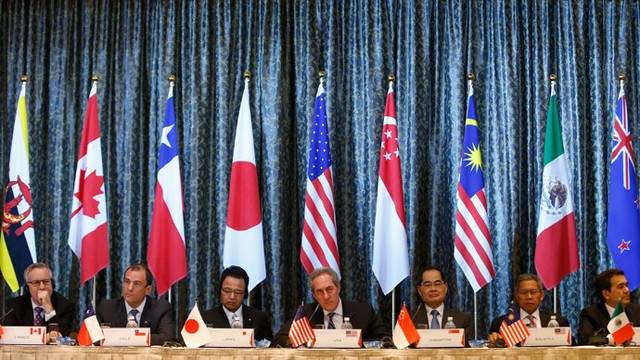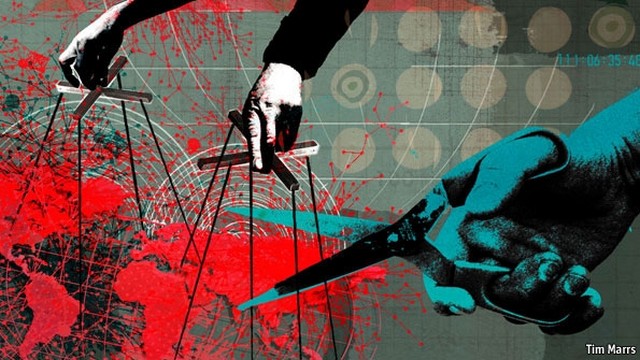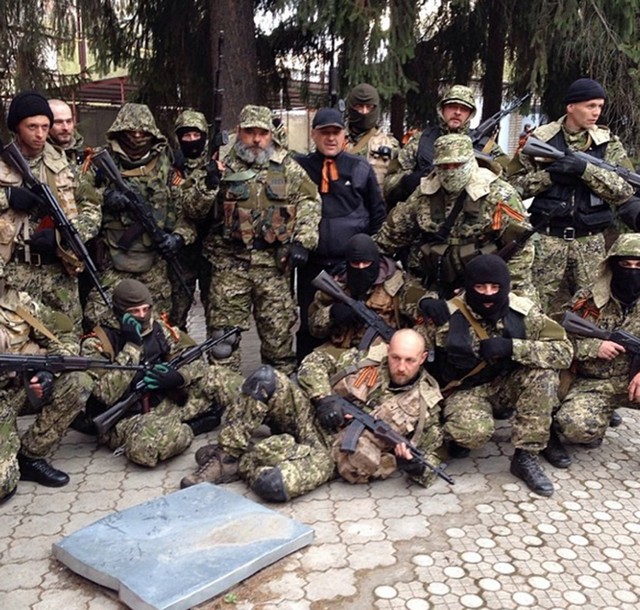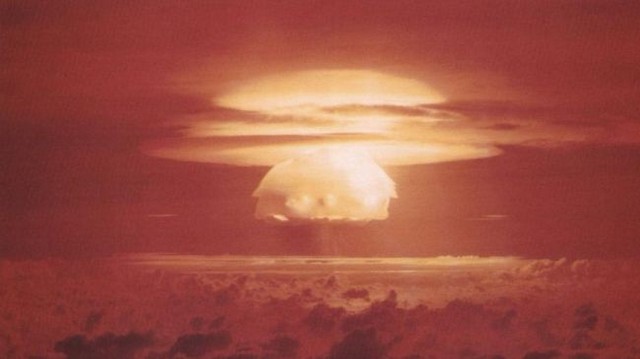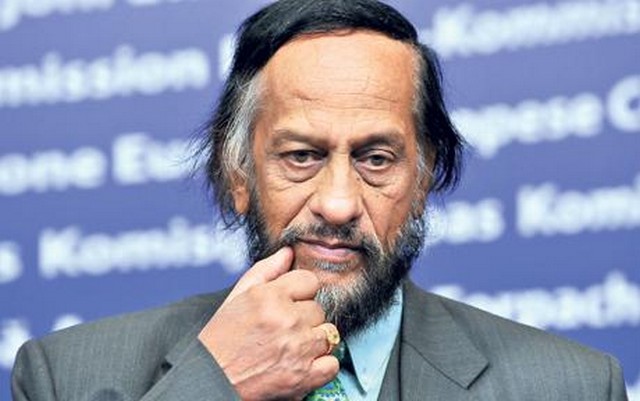By Nile Bowie
As Washington pursues its rebalancing strategy, Obama’s historic four-nation tour of the Asia-Pacific has subtly altered the region’s security dynamics.
“The United States is a Pacific power, and we are here to stay,” declared President Obama during his speech to the Australian parliament in 2011, following his announcement to deploy 2,500 marines to northern Australia to help protect American interests across Asia.
As Washington remains embroiled in domestic economic issues and conflicts throughout the Middle East and elsewhere, the Obama administration has come under great scrutiny for not living up to the promise of rebalancing to the Asia-Pacific, the world’s most economically-dynamic region. The US president’s recent trip to the region was the most significant and tangible development to occur since the rebalancing policy was unveiled.
Obama’s trip had two primary dimensions: deepening the role of the US military throughout the Asia-Pacific, and shoring up support for the faltering Trans-Pacific Partnership (TPP) agreement, an all-encompassing trade deal led by Washington that would embolden transnational corporate power at great public expense.
As the Obama administration moves ahead on plans to relocate some 60 percent of its navy into the region, Washington’s current Asia doctrine is grounded in the notion that no other power can be allowed to reach parity with the United States. Washington’s strategy to pivot toward the Asia-Pacific is adorned with the language of pragmatism and neutrality, and despite repeated denials, the Obama administration’s actions are quite transparently aimed at capping the influence of a rapidly developing China.
Washington has inserted itself into complicated, long-standing historical and territorial disputes under the guise of neutrality, which risks potentially setting the stage for an irreparable strategic blunder: antagonizing two major world powers simultaneously at a time when relations between the US and Russia are already deteriorating over the crisis in Ukraine.
President Obama’s milestone four-nation tour of the Asia-Pacific may have laid the foundations for the region’s local territorial disputes to grow into an increasing tense superpower stand-off.
Japan refuses to yield on trade
The US president’s visit to Japan comes at a time when the right-leaning administration of Shinzo Abe has taken controversial positions on historical and territorial issues that have inflamed relations with China and South Korea, which view the incumbent Japanese government as being openly unrepentant for past atrocities.
The White House previously expressed reservations toward Abe’s calls to consider revising official apologies over Japan’s wartime conduct, and his controversial visit to the Yasukuni shrine that honors Japan’s WWII war dead, including over a dozen convicted Class-A war criminals. Abe made a ritual offering to the Yasukuni Shrine shortly before Obama’s arrival in Tokyo, followed by 146 Japanese lawmakers who visited the shrine en masse one day later, putting the US president in an awkward situation.
These provocative gestures did little to derail Obama’s support for Japan’s position in its tense territorial dispute with China over a chain of uninhabited islands in the East China Sea. In an interview with Japan’s Yomiuri Shimbun newspaper, Obama affirmed that the disputed islands fell within the scope of Article 5 of the US-Japan Treaty of Mutual Cooperation and Security, meaning that Washington would be obliged to back Japan in the event of a military confrontation over the islands with Beijing, which views the islands as an integral part of its territory.
Obama also enthusiastically pledged support for Abe’s moves to amend Japan’s post-war pacifist constitution, which has traditionally limited Japan’s armed forces from going beyond a self-defense role.
In the interest of expanding the US-Japan alliance to counter the growing clout of China, the US president has given Japanese rightists a green light to pursue militarization policies that will undoubtedly fuel regional antagonism. Rather than taking a neutral position and steering Tokyo toward a de-escalation with Beijing, Obama has effectively sent Abe the message that he can challenge China’s bottom line without serious repercussions, encouraging Japan to continue its inflexible position. Obama may have hoped that in exchange for backing Japan’s stance on territorial disputes and constitutional reform, Abe would have reciprocated by yielding on thorny trade issues, but he was wrong.
Obama allegedly put his chopsticks down halfway through his informal sushi dinner with Abe and jumped straight into discussions about trade. The White House is anxious to seal the TPP trade deal, but is unwilling to give significant concessions, forcing all countries to meet rigid criteria. Abe risks losing support from his conservative voter base by reducing tariffs on areas such as rice, sugar, beef, pork and dairy that would adversely affect Japanese farmers. Obama was expecting to come to a final agreement with Abe, but trade negotiators claim that there is still “considerable distance” between the US and Japan on key issues in the deal.
Trade talks are not expected to recommence anytime soon, and Obama was forced to reject suggestions that the deal is in danger over his failure to persuade Abe into making painful concessions.
Dialogue with Pyongyang ruled out?
Obama’s trip to South Korea came as the country was still reeling from the tragic sinking of the Sewol ferry, which killed scores of youngsters. Security topped the agenda as reports of increased activity at North Korea’s Punggye-ri nuclear test site wrought condemnation from Seoul. President Park Geun-hye adopted a hardline stance, calling for the rejection of dialogue with Pyongyang over the nuclear issue if the North conducts a fourth nuclear test as expected.
Pyongyang proposed a framework for better relations with the South at the start of this year and urged its willingness to meet for negotiations on the nuclear issue without any preconditions. The attempted thaw in relations culminated in reunions of separated families in February, amid Pyongyang’s calls for Seoul to cancel its planned joint military drills with the US.
Given the circumstances, South Korean authorities could have toned down this year’s drills as a gesture of reciprocity following Pyongyang’s moves to host family reunions. Seoul’s response was to hold the largest amphibian landing exercise with the US in over two decades, followed by large-scale war exercises. The lack of sincere measures to cool ties with Pyongyang is evident in the actions of Seoul and Washington, who are quick to accuse the North of provocations while flexing military muscles on its doorstep, ratcheting up anxiety and insecurity.
Park and the Obama administration refuse to open dialogue with Pyongyang unless it agrees to denuclearization as a precondition, despite pressure from China that preconditions be relaxed to allow the recommencement of the Six-Party talks.
During a joint press conference, Park announced that plans to transfer operational command of South Korea’s military in time of war, or OPCON, from the US to South Korea would be further delayed, giving the Pentagon de-facto control over South Korea’s military forces beyond December 2015.
Washington has also encouraged Seoul to strengthen missile defense cooperation – which Park agreed to do – while deepening trilateral cooperation between the US, Japan, and South Korea. During his trip, Obama called for more sanctions against North Korea and spoke of America’s capacity for military might, creating every indication that Washington’s antagonistic ‘strategic patience’ policy against Pyongyang will remain unchanged.
Malaysia’s delicate balancing act
Western media have billed Obama’s trip to Malaysia – the first visit by a US president in nearly five decades – as being quite successful. Malaysia was the only Muslim-majority country on the president’s four-nation tour, and the only country not to have an existing security treaty with the United States.
Washington and Kuala Lumpur have always enjoyed strong trade relations, but political relations were known to be tense during the 22-year tenure of former PM Mahathir Mohamad, who took strong positions against US foreign policy. Prime Minister Najib Razak, a British-educated economist who assumed office in 2009 as a reformer, has been much friendlier to the US.
The New York Times described Malaysian leadership’s change of attitude as an evolution from “deep suspicion, verging on contempt, to a cautious desire for cooperation.” Suspicious attitudes toward the US are still commonplace among certain factions within the ruling party and the conservative religious establishment. Several far-right Malay rights groups share the same misgivings, lashing out at Obama following statements he made on racial equality in the country.
Trade and security topped the agenda during Obama’s visit, and although progress was made in both areas, it’s likely that the US delegation was hoping for a firmer stance on issues such as territorial disputes in the South China Sea. Malaysia is China’s largest trading partner within the ASEAN bloc, and of all the countries in the region who have territorial disputes with Beijing, the approach taken by Kuala Lumpur has been the most low-key and non-adversarial.
ino-Malaysian ties were upgraded to a ‘comprehensive strategic partnership’ level during Chinese President Xi Jinping’s visit to Kuala Lumpur in October 2013, while Najib and Obama agreed to upgrade ties to a ‘comprehensive partnership’ at a joint news conference following their talks on Sunday.
In the joint statement prepared by the two sides, Najib called for the full implementation of the Declaration on the Conduct of Parties regarding the South China Sea disputes, which Chinese state-media welcomed, saying that Malaysia showed a balanced attitude to avoid confrontation with China.
In an interview with Malaysian newspaper The Star, Obama alluded to his administration’s commitment to ensuring the “freedom of navigation in critical waterways,” which can be understood as a euphemism for policing the Straits of Malacca, one of China’s most critical supply routes responsible for transporting much of the oil and raw materials needed by Beijing to maintain high economic growth. Malaysia allows American warships to dock at ports throughout the country, but does not host any US military bases, and does not seek a hostile relationship with Beijing.
It is unclear how deep Malaysia’s commitment to security cooperation with the US will go, although the Obama administration has pledged to assist in the development of Malaysia’s maritime enforcement capacity, setting the stage for deeper military-to-military cooperation. In the economic sphere, there were no breakthroughs on the TPP trade deal, with both sides admitting that significant differences still remain.
Najib, however, made clear that the overall benefits of the TPP would far outweigh the disadvantages of the pact; he mentioned his commitment to getting acceptance from Malaysian people, but offered no specifics on how public acceptance of the trade deal would be measured. Mahathir, who still exerts a degree of influence on traditionalists within the ruling party, commented that Malaysia should not be pressured to agree to the terms stipulated by the TPP. The former PM has routinely called for the trade deal to be dropped, and a large segment of Malaysian civil society and activists are also opposed to the deal.
As a country that has put much emphasis on a non-confrontational foreign policy, Malaysia is well suited to leverage its good ties with Washington and Beijing to promote a conciliatory solution to territorial issues. Malaysia finds itself somewhere between being a warm friend to the Obama administration but not yet a staunch US ally with deep security ties.
Philippines signs 10-year defense agreement
To coincide with the last stop of his four-nation tour, Washington and Manila inked a controversial defense agreement to allow greater numbers of US soldiers to remain in the country on a rotational basis.
The reopening of foreign bases is prohibited by the 1987 Constitution, but the latest defense pact – negotiated largely in secret, and fast-tracked into law under the auspices of an executive agreement without ratification by the Philippine Congress – gives the US government de facto basing access in the country.
The US maintained large military bases in northern regions of the Philippines until the Philippines congress voted to close them down in 1991, but American forces were allowed to return in 1999 under a temporary stay agreement that saw US troops conduct joint training with the Philippines military. The new agreement is far broader, allowing the US military to establish permanent facilities within Philippine military facilities, also paving the way for American military technology to be sold to the Philippines.
Philippines President Benigno Aquino’s rationale for expanding the US presence in his country is to provide the Philippines with a powerful deterrent in the midst of Manila’s bitter territorial row with Beijing, as both countries lay claim to the Scarborough Shoal and Second Thomas Shoal in the potentially oil- and gas-rich South China Sea. The Philippines and its neighbors undoubtedly have firm and legitimate grievances in the interest of protecting their sovereignty and territorial integrity.
It should be recognized that the disputed features falls within the Philippine’s 200-nautical mile exclusive economic zone as recognized by the UN Convention on the Law of the Sea; China has resisted applying the procedures stipulated by the law to the many reefs and islands that lie much closer to the Philippines than to China. Manila has argued that Beijing has an obligation to respect the Philippines’ rights to exercise control over areas that fall within its 200-nautical mile exclusive economic zone.
China claims that its sovereignty over the disputed areas can be supported by abundant historical and legal evidence, which also support Beijing’s maritime rights over three-quarters of the South China Sea. Beijing has consistently called for settling territorial issues through direct bilateral negotiations. Earlier this year, it offered the Philippines mutual disengagement from the contested area, trade and investment benefits, and postponement of the plans to declare an air defense identification zone over the South China Sea. The Philippines leadership rejected the proposal, and unilaterally filed a case with the tribunal that arbitrates maritime disputes under the UN Convention on the Law of the Sea.
China has resolved territorial disputes with 12 of the 14 countries with which it shares land borders, and the immense complexities of these maritime territorial disputes require levelheaded dialogue and a commitment from negotiations by both sides.
The Philippines leadership may have legitimate grievances, but is clearly not committed to seeking a resolution through dialogue, resorting to hyperbolic name-calling. In an interview with the New York Times, Aquino compared China to Nazi Germany, causing immense harm to bilateral relations with Beijing.
Much like the Obama administration’s position on Japan’s territorial disputes, there is now a concern that backing by the US military can encourage Manila to take a provocative and reckless stance.
Washington has entered the regional fold claiming to be a neutral party and mediating force, yet it supports the territorial claims of its allies and uses them as a justification to maximize its own interests, transforming a regional dispute into a potential super-power conflict, reducing the possibility for any peaceful settlement.
The recent security developments will deepen Manila’s historic dependency on the United States, reinforcing its colonial subordination to the strategic, military and regional priorities of American hegemony.
Nile Bowie is a political analyst and photographer currently residing in Kuala Lumpur, Malaysia. He is also a Just member.
29 April 2014
RT.com

